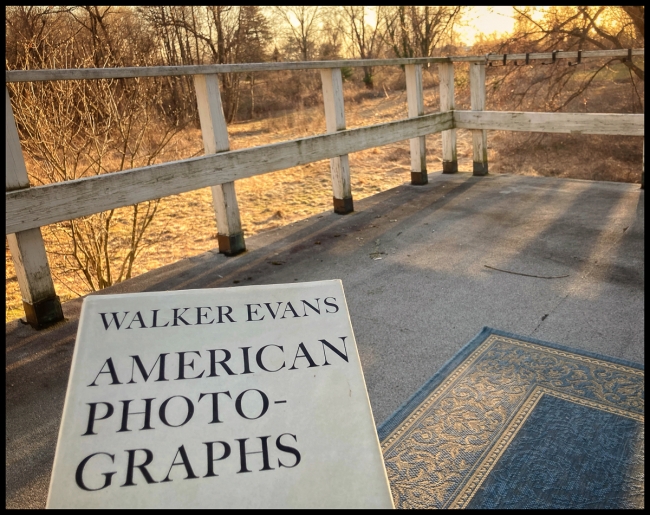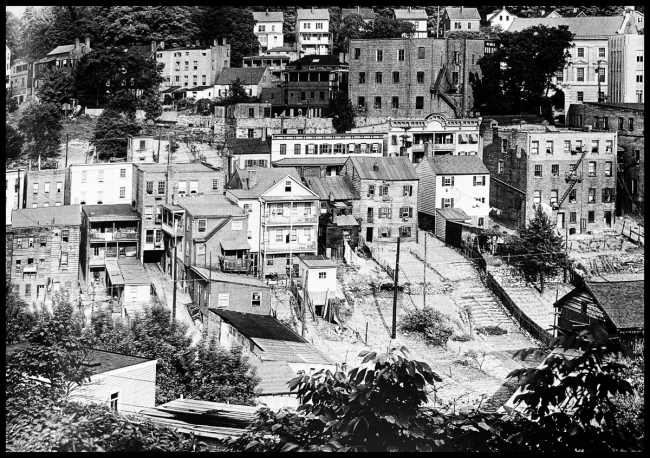I was sitting on the balcony last night reading American Photographs by Walker Evans, one of my top 5 photographic heroes. I came across a photograph captioned: “View over Ossining”. Briarcliff Manor, the village where I live is part of the town of Ossining. A quick Google search and I discovered that Evans lived and worked in Ossining between June and October 1928, and intermittently over the next several years. How about that?
An article on “Walker Evans in Ossining” states:
Walker considered the photographs he took in Ossining to be among his best. This is demonstrated by their inclusion in shows and publications for the next fifty years—including the five in American Photographs.”
Throughout his early times in Ossining he worked with a vest-pocket camera and his father’s Kodak Tourist. He and Hanns would hike all over town, photographing whatever they came upon. They often walked down by Sing Sing prison, although the prison was notably absent from his subject matter. Also absent were any photographs of the spectacular views of the Hudson River from the Ossining shoreline. He had very specific ideas about what was and was not worthy. Walker felt some things were just not proper subjects for photography. He spelled it out in one letter:
- “Valid photography, like humor, seems to be too serious a matter to talk about seriously. If, in a note it can’t be defined weightily, what it is not can be stated with the utmost finality. It is not the image of Secretary Dulles descending from a plane. It is not cute cats, nor touchdowns, nor nudes; motherhood; arrangements of manufacturers’ products. Under no circumstances is it anything ever anywhere near a beach. In short it is not a lie, a cliche, somebody else’s idea. It is prime vision combined with quality of feeling, no less”.
To be sure, he mostly adhered to this code throughout his career, though exceptions to those forbidden subjects (every single one except for sports) were found among the 10,000 images in the Metropolitan Museum of Art Walker Evans archive (WE archive). In his Ossining photographs there are none of the expected images of the stark prison gun turrets, the dramatic vistas of the Hudson River, or the imposing mansions of the rich and famous overlooking the river from atop the sand bluffs or buried deep in the Ossining woods near his sister’s house, like the Frankensteinian castle of the Abercromby’s (of Abercromby and Fitch, merchants in New York). Instead, he depicted a few ordinary people in midstep.
In a letter to Skolle in April of 1933, he said,
I have done some more things around Ossining, which grows better and better as a subject for camera
The article also discusses Evans’s friendship with fellow Ossining residents Aaron Copeland and John Cheever.


